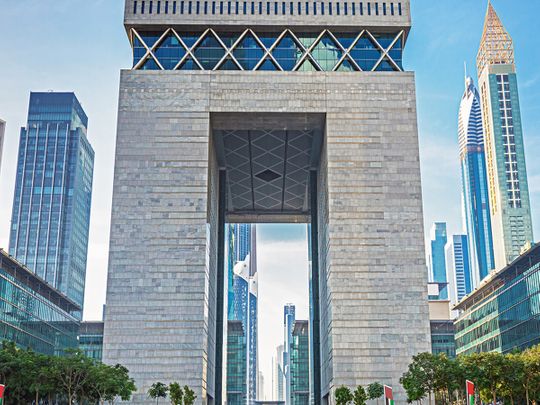
Dubai: Economists are forecasting higher economic growth for GCC countries driven by high oil prices boosting their fiscal and current account balances. However, some argue that a short term spike in hydrocarbon prices alone can’t sustain the growth momentum.
Experience in the past shows oil exporting countries have been susceptible to boom – bust cycles depending on the direction of hydrocarbon prices. Many economists argue that sustainable growth can be achieved only through effective structural changes to these economies and suitable economic diversification focused on reduced dependence on oil exports.
According to rating agency Standard & Poor’s, higher oil and gas prices generally improve the budget and current account positions of hydrocarbon-exporting sovereigns. However, the rating agency also views the prolonged and, in some cases, ongoing structural deterioration in their stock positions, government net debt and net external debt, alongside modest fiscal and economic reform momentum as key rating considerations.
Economists recognize the immediate benefits of oil price surge on the terms of trade gains of oil exporters.
Large oil exporters are getting a sizable boost to their terms of trade from higher prices, leading to wider current account surpluses particularly in Saudi Arabia, the UAE, Qatar, and Russia.
The fiscal balances in major oil exporting countries will shift to sizeable surpluses in 2022. Net government revenues account for more than half of total total government revenues of GCC countries. Consequently, the fiscal deficits of 2020 is forecast to shift to surpluses in 2022 in most of these countries.
Structural shift
Oil prices have been witnessing a structural shit since the second-half of 2014 with long term implications for government revenues of oil exporters.
The post-pandemic recovery is expected to accelerate demand for alternative energies, and erode demand for fossil fuels. BP, one of the the world’s seventh-largest oil companies, last year wrote that falling fossil fuel use and rising renewable technologies are structurally altering energy demand and can be expected to exert downward pressure on oil prices in the longer term.
“We differentiate between structural and cyclical changes in oil prices. We have lowered most of our ratings on sovereign hydrocarbon exporters since the structural change in the oil market that began in the second-half of 2014. We expect relatively modest oil prices over the longer term. As our ratings already factor in such structural changes, we do not expect cyclical price changes to significantly affect them,” said Trevor Cullinan an analyst at S&P.
Is it different this time?
Economists and analysts see policy response of hydrocarbon-exporters to structural changes in the oil market is a key element of medium to long term growth outlook.
Many believe that the GCC states are earnest about the long term changes in their economies. The unabated push by Gulf States to achieve a structural transformation away from hydrocarbons will continue to gain traction this year according to MUFG Bank.
GCC countries have been concerned about the sustainability of their hydrocarbon revenues for decades. Historically public and private sector activity in the GCC rely heavily on government-funded projects and consumption that are ultimately supported by oil and gas revenues. Increasingly governments are realizing the need to have diversified revenue streams prompting the introduction of value added tax and corporate tax in many countries in addition to structural reforms to increase private participation in their respective economies.
“Higher government revenues and expenditure rationalisations in 2022 budgets strengthens balance sheets and offers greater fiscal capacity to navigate towards a post-pandemic equilibrium – also supportive of debt markets which not only improves credit profiles and stabilises sovereign ratings, but reduces new issuances and restricts supply, thus eases debt burdens,” said Ehsan Khoman, director of emerging markets research for Europe, the Middle East and Africa at MUFG Bank.
S&P analysts say multiple factors will decide the longer term outlook of oil exporters. When higher oil prices result in higher revenues, governments may choose to allow their fiscal balances to improve or they may decide to increase spending to support their economies. Governments may use the reduced pressure on public finances to delay planned expenditure cuts or the implementation of measures to diversify their revenue streams.
“We assess the effects of oil price changes alongside these and many other factors such as GDP, inflation, and the sovereign’s external position. Even if oil prices increase further, we would not necessarily expect the sovereign ratings on hydrocarbon-exporting sovereigns to return to pre-2015 levels, absent changes in other rating factors,” said S&P’s Cullinan.












